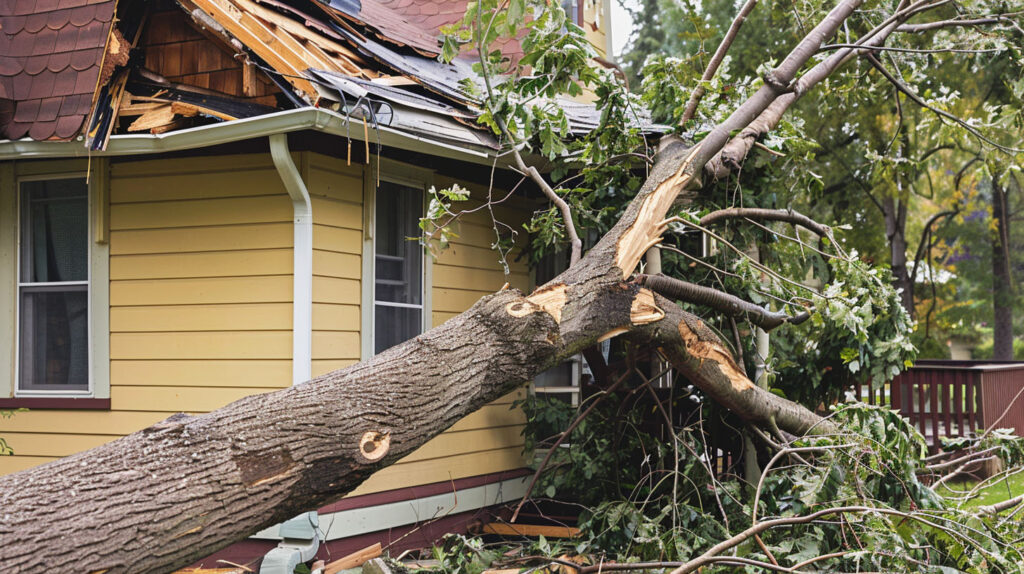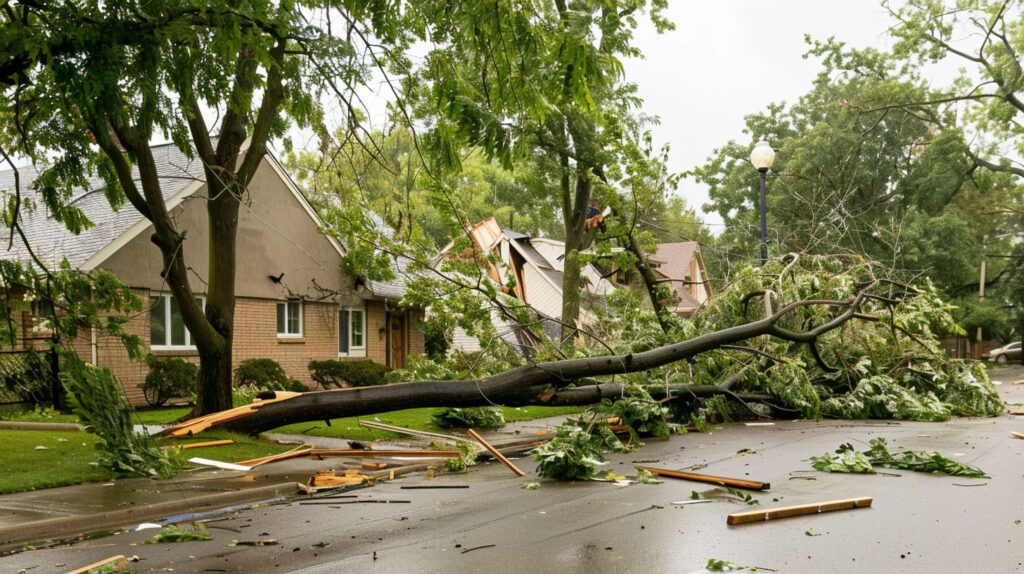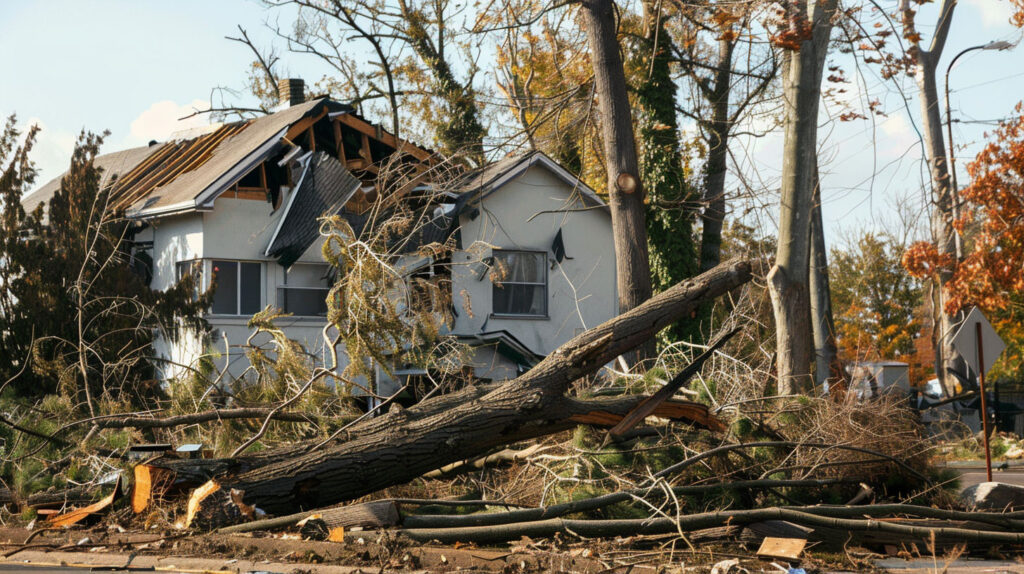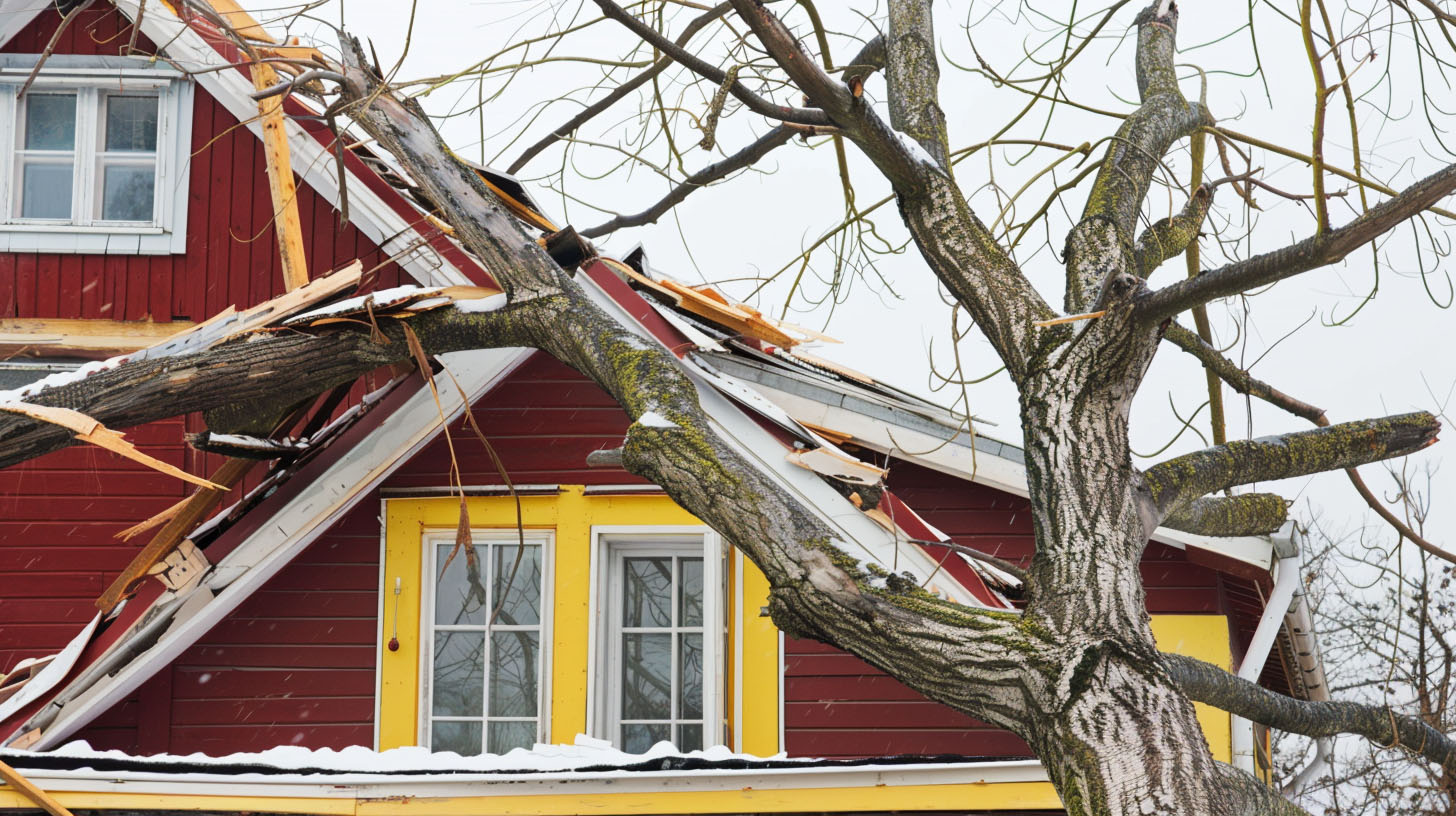Storm Damage Checklist: What to Do After High Winds
High winds can wreak havoc on your home, leaving behind structural issues and hidden damage. But knowing what to look for after a storm can make all the difference in protecting your property. This storm checklist is designed to help you assess the impact of severe weather, from visible damage to water infiltration. Whether it’s missing shingles, dents, or siding concerns, taking proactive steps in the aftermath, especially with the help of Specialist Roofing & Repair will ensure your home’s safety and give you peace of mind for the next storm in Burbank, CA.
Assessing Storm Damage: First Steps After High Winds
When high winds subside, the first steps in assessing storm damage often start with focusing on safety. Your home may have sustained extensive visible damage or even concealed water issues that require careful examination. Before diving into repairs, ensure the area is secure by checking for potential hazards.
After securing your home, begin a thorough inspection of the exterior, roof, and siding to identify storm-related concerns. Visible damage like missing shingles or structural problems may signal the need for restoration. Read on for more specific steps to consider first.
Look for Immediate Safety Hazards Around Your Home
After strong winds have passed, a careful inspection of the outside of your home is essential. Look for visible damage, such as downed tree limbs, large debris, or any fallen items that could pose a risk. Significant hazards can also arise from loose electrical wires, which require immediate attention to prevent potential electrical shock or fire. Prioritize your safety and that of others, as well as ensure your property is secure before assessing any possible storm restoration needs.

Check Power Lines, Gas Leaks, and Electrical Issues
Assessing power lines and gas connections is crucial after high winds wreak havoc on your property. Fallen lines may carry live electricity, posing a deadly danger. Keep a safe distance from downed power lines and report immediately to your utility company. Additionally, inspect for any gas leaks, which can lead to explosive situations. A musty smell near appliances or in your basement may indicate issues. Look for visible damage around electrical fixtures, ensuring the safety and functionality of your home before restoration begins.
Inspecting Your Roof for Wind Damage
Beyond shingles, other features like flashing and vents may require attention. Unchecked issues can lead to severe water infiltration into your attic or living space, so prioritizing inspection can protect your home long-term. Let’s explore what to examine on your roof next.
Identify Missing, Lifted, or Damaged Shingles
A thorough inspection of shingles is essential after high winds, as missing, lifted, or damaged shingles can compromise the roof’s integrity. Look for visible signs of storm damage, such as granules in gutters or shingles that appear out of place. Not only do these issues create potential leaks and water infiltration, but can also lead to costly roof storm damage if left unaddressed. Document any damage found—this information will be crucial for your insurance claim process.
Examine Flashing, Vents, and Chimney for Issues
Inspecting the flashing, vents, and chimney is critical in storm restoration, especially after high winds. Look for any visible damage such as dents, rust, or missing pieces that could lead to leaks or water infiltration. Proper ventilation is key to preventing moisture issues, so ensure vents are intact and unobstructed. Additionally, check the chimney for cracks or loose flashing as these can become points of weakness in your home’s structure, leading to further damage if not promptly addressed.

Evaluating Exterior and Structural Damage
High winds affect more than just your roof leave lasting marks on the exterior of your home. From dents in siding to compromised structures, the effect is often widespread. Begin by visually assessing property damage and looking for cracks, holes, or loosened elements.
Addressing these exterior issues promptly prevents water infiltration and keeps your property’s integrity intact. Use this opportunity to prepare your home for restoration by identifying areas requiring immediate attention. Next, let’s focus on specific areas of concern.
Check Gutters, Downspouts, and Siding
Inspecting gutters, downspouts, and siding is essential for recognizing signs of storm damage after high winds. Proper drainage is crucial; ensure that gutters are free from large debris and functioning effectively to prevent water infiltration. Look for bent or detached downspouts, which can lead to flooding around the foundation. Additionally, check the siding for dents, cracks, or loose panels, as these issues can jeopardize the structure of your home and exacerbate water damage, leading to further complications.
Inspect Windows, Doors, and Garage Entry Points
Checking windows, doors, and garage entry points is vital following high winds. Look for visible damage, such as broken glass or warped frames, that may allow water infiltration or drafts. Ensure seals around these openings remain intact to prevent further moisture issues. Pay attention to the garage door’s functionality; strong winds can compromise its structure. Proper documentation of any damage is essential for your insurance claim to facilitate timely storm restoration, ensuring the safety and security of your home against the next storm.

Your Next Steps
In the aftermath of severe weather, a thorough evaluation becomes essential for effective storm restoration. By following the storm checklist and promptly identifying visible damage, homeowners can mitigate further issues such as water infiltration and mold growth. Engaging with your insurance company early can streamline claims, providing peace of mind during the restoration process. Prioritizing repairs not only safeguards the structure of your home but also enhances its resilience against future storms. Stay proactive to ensure lasting protection.
Frequently Asked Questions
What to do after a severe storm?
After a severe storm, prioritize safety by clearing immediate hazards and documenting visible damage. Inspect your property thoroughly, focusing on storm damage like water infiltration. Contact your insurance company and begin restoration promptly with professional assistance to ensure your home remains safeguarded.
How to reduce damage from high winds?
To minimize damage from high winds, maintain proper drainage by cleaning gutters regularly. Secure all shingles to prevent roof storm damage. Ensure your property is storm-ready with proactive inspections and strategies that ease filing an insurance claim if severe weather occurs.
Read our blog: The Benefits of Cool Roof Technology



